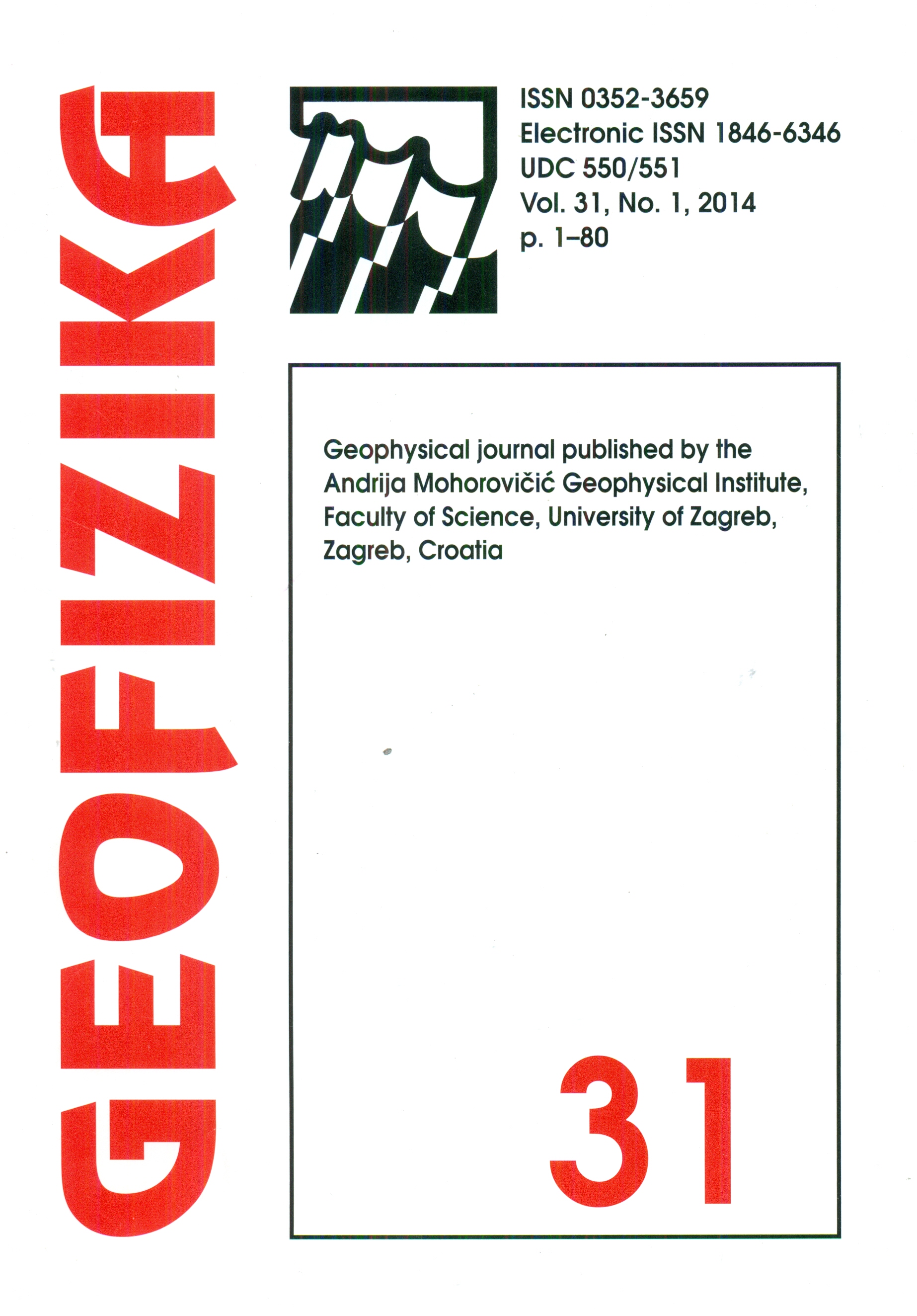Fluctuation of rainfall time series in Malawi: An analysis of selected areas
DOI:
https://doi.org/10.15233/gfz.2014.31.1Keywords:
bimodal rainfall, inter annual fluctuation, seasonal index, precipitation concentration index, spectral analysisAbstract
Inter annual fluctuation of rainfall in Malawi was studied using a 31 year time series from selected rain gauge stations with the aim of analyzing the spatial and temporal characteristics of rainfall in Malawi. The study found strong inter-annual fluctuation of rainfall, with topography and location playing major roles in the annual rainfall distribution. The seasonal index and precipitation concentration index showed that rainfall is highly seasonal and highly concentrated with most stations receiving rainfall in three months, except for Nkhatabay which has seasonal rainfall. The intra annual rainfall distribution was highly variable in time and space. Cross correlations among the stations suggested two distinct zones, zone 1 composed of Karonga and Nkhatabay and zone 2 composed of Bolero, Kasungu, Salima, Dedza, Mangochi, Makoka and Ngabu. Spectral analysis of the rainfall time series revealed cycles at five to eight years, suggesting links with the El Nino Southern Oscillation and double the period of the Quasi Biennial Oscillation. Apart from the common cycles, the rainfall time series of the two zones showed periods of 13.64 and 10.06 years, respectively, which suggests links with the solar cycle. These cycles are consistent with those found in other southern Africa countries.
Downloads
Published
Issue
Section
License
Copyright (c) 2021 Geofizika journal

This work is licensed under a Creative Commons Attribution-NonCommercial 4.0 International License.

